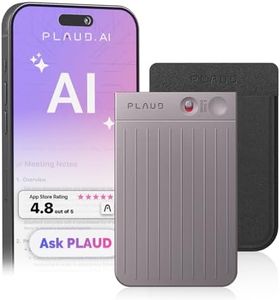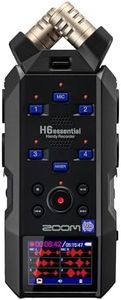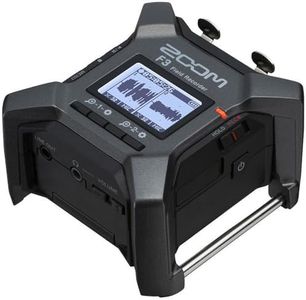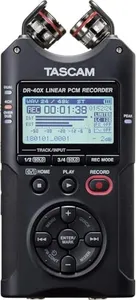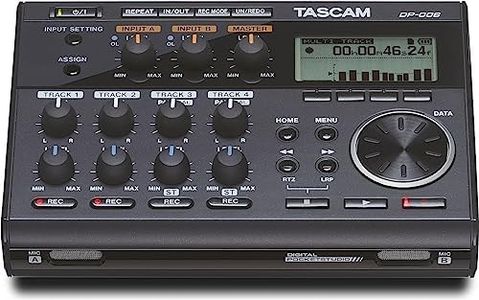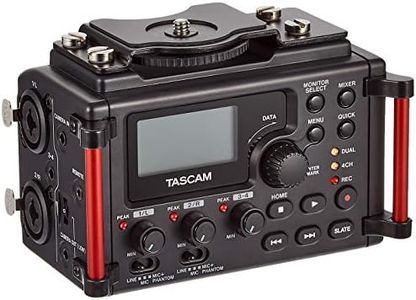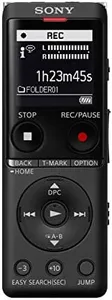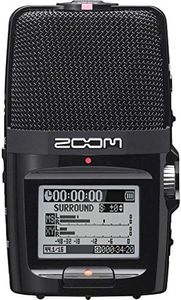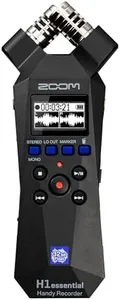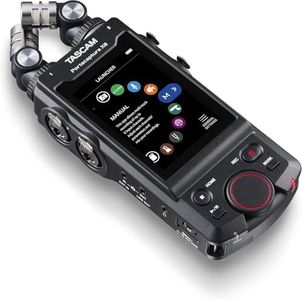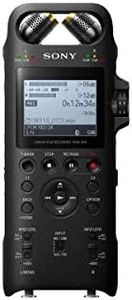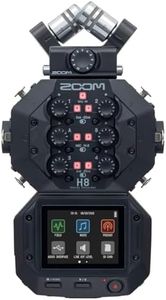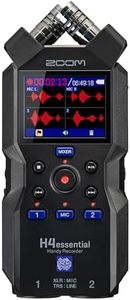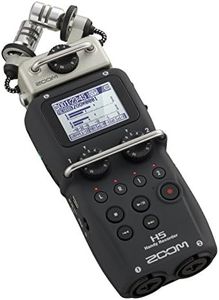We Use CookiesWe use cookies to enhance the security, performance,
functionality and for analytical and promotional activities. By continuing to browse this site you
are agreeing to our privacy policy
10 Best Lecture Recorders
From leading brands and best sellers available on the web.Buying Guide for the Best Lecture Recorders
Choosing a lecture recorder is about matching its features to how, where, and how often you’ll use it. Think about whether you’ll be recording in large lecture halls or small classrooms, if you need to capture distant voices, or if you plan to use the files for transcribing or reviewing later. You’ll want a balance between audio clarity, ease of use, and portability. Consider what is important to you: clarity of audio, battery life, file transfer options, and user-friendly controls.Microphone Quality and Number of MicrophonesMicrophone quality is at the heart of any lecture recorder. It determines how clearly voices are captured, especially in rooms with background noise or if the speaker is far away. Some recorders have multiple microphones, which can better pick up voices from different directions or provide stereo sound. Single microphone setups are often fine for close distances or quiet spaces, while dual or multiple microphones work better for larger rooms or if you need to record several speakers at once. Think about where you’ll be using the recorder most often—if it’s a large hall, look for more advanced microphone setups.
Recording FormatsThe recording format affects both sound quality and how easy it is to manage, edit, or share the files later. Common formats include MP3 (smaller files, easier to share) and WAV (higher quality, larger files). If you need high-quality sound for transcription or editing, choose a recorder that offers uncompressed formats like WAV. For quick note-taking or if you need to save space, MP3 is usually enough. Consider what you plan to do with the recordings—if you mostly listen back on your phone, smaller MP3 files are probably best.
Storage CapacityStorage capacity determines how many hours of audio you can record without needing to transfer or delete files. Internal memory is convenient, but check if the recorder lets you add a memory card, which gives you flexibility. Low storage (a few GBs) might be enough for short, occasional recordings. Medium storage (up to 8–16GB) is good for regular use or longer lectures. High storage (32GB and above, or expandable via memory card) is important if you record many hours at a time or need to keep files on the device before transferring them.
Battery LifeBattery life tells you how long the recorder will work before needing a recharge or new batteries. Short battery life (a few hours) works for quick meetings or short lectures. Medium battery life (6–12 hours) is suitable for most school days, while longer battery life can cover multiple days or back-to-back sessions. If you record all day or don’t have easy access to charging, focus on models with long battery life. Also, decide if you prefer built-in rechargeable batteries or replaceable ones, which you can swap out if needed.
Portability and BuildSize and weight matter, especially if you carry your recorder to every lecture. Smaller, lightweight recorders are easy to slip into your pocket or bag, but make sure they’re not so tiny that the controls become hard to use. A sturdier build offers more protection if you’re frequently on the go. Think about how comfortable you are with small devices and how much space you have in your bag—choose based on what you’ll actually carry every day.
Ease of Use and ControlsThe design of buttons, screen, and menus impacts how quickly you can start recording or find old files. Simple, clearly marked buttons are best if you need to record at a moment’s notice, while advanced menus can offer more features but take time to learn. If you need to pause or mark important sections during a lecture, look for shortcut buttons. Think about how tech-savvy you are—if you prefer simplicity, look for intuitive devices with minimal menus.
Connectivity and File TransferHow you move files from the recorder to your computer or phone is important. Most lecture recorders offer USB connections, while some offer wireless options like Bluetooth or Wi-Fi. A basic USB cable is quick and easy for most people. If you want to transfer files directly to your phone or use cloud services, look for devices with compatible wireless features. Consider how often you need to move or share files—occasional use makes basic options fine, while frequent transfers may justify advanced connectivity.
